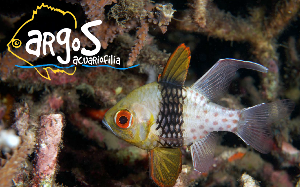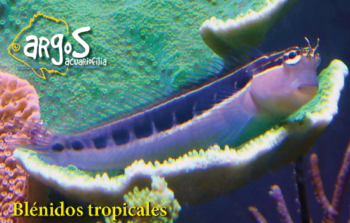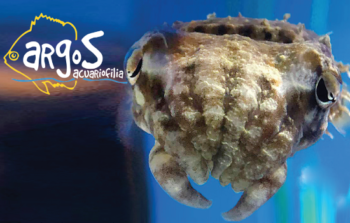Tateurndina ocellicauda, mantenimiento y reproducción
Autor: Jose Maria Cid RuizResumen
Este artículo describe de forma amena pero didáctica, las principales claves identificadas por su autor, José Mª Cid Ruiz, para lograr tener éxito en los protocolos de formación de parejas, mantenimiento en acuario, reproducción y desarrollo de larvas del bello gobio tropical Tateurdina ocellicauda. Se trata de uno de los eleótridos de menor tamaño. Los machos no superan los 6 cm. y las hembras alcanzan con dificultad los 5 cm. Proceden de Papua Nueva Guinea, en cuya mitad Este, ocupa ríos y arroyos de curso lento y densa vegetación en sus márgenes. Las aguas de estos ríos son blandas y ligeramente alcalinas (pH: 7,6), con una temperatura media de 22º C. T. ocellicuada presenta un comportamiento en cau tividad que se caracteriza entre otras cosas, por la no vinculación de los machos fuera del período de desove a ningún territorio concreto. Llegado el momento en que la pareja se introduce en el refugio para desovar y si éste presenta algunas po sibilidades de observación, se apreciará cómo la hem bra recorre con su vientre pegado a la superficie, la pa red interna de la cavidad, depositando uno a uno los grandes huevos, casi traslúcidos, que van apareciendo al extremo de su oviducto. El macho permanece en el interior de la cavidad muy próximo a la hembra, pero sin que se aprecie que presione el flanco de la misma durante la expulsión de los huevos. Este, se limita a «repasar» con su área genital la zona donde van que dando los huevos en su intento de fecundarlos.
Abstract
This article describes in a pleasant but didactic way, the main keys identified by its author, José Mª Cid Ruiz, about the protocols of formation of couples, maintenance in the aquarium, reproduction and development of larvae of the beautiful tropical goby Tateurdina ocellicauda. It is one of the smallest eleotroids. Males do not exceed 6 cm. and the females reach 5 cm with difficulty. They come from Papua New Guinea, in whose eastern half, it occupies slow-flowing rivers and streams with dense vegetation on its banks. The waters of these rivers are soft and slightly alkaline (pH: 7.6), with an average temperature of 22º C. T. ocellicuada exhibits a captive behavior that is characterized, among other things, by the non-attachment of males outside the spawning period to any specific territory. At the time when the couple enters the refuge to lay their eggs and if it presents some possibilities of observation, it will be appreciated how the female walks with her belly pressed to the surface, the internal wall of the cavity, depositing one by one the large, almost translucent eggs that appear at the end of their oviduct. The male remains inside the cavity very close to the female and proceeds to fertilize the eggs that are being deposited by the female.




